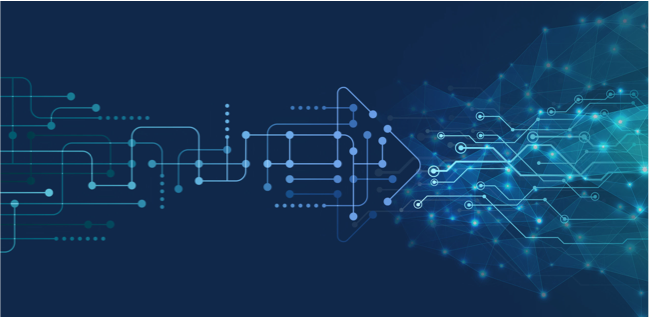Why Dashboards?
At the end of 2022, the FCC (Federal Communications Commission) laid down the gauntlet on improving 911 reliability by issuing an order [FCC 22-88]...
The move to an IP-based infrastructure offers numerous benefits, some of which will be used every day, and some will not likely be as obvious. Forest Guides are no exception. As I’ve discussed in previous blogs, NG911 (Next Generation 911) and in particular ESInets (Emergency Services IP Networks), will expand the reach and interconnection across public safety jurisdictions. Forest Guides provide the means for us to find the right destination for an RFA (Request for Assistance) outside our locale, where conventional methods may struggle.
From where I sit, Forest Guides might be the most underrated element of NG911 so far. What do I mean by underrated? Well, if you don’t mind the digression, I’ve been a so-called Chicago Superfan for many years. In this town, we spend a lot of time rooting for “Da Bears” and “Da Bulls.” While much attention has been paid over the years to superstar Michael Jordan, I was also a big fan of hit teammate, Horace Grant. Grant was not only a phenomenal defensive player, but he seemed to hold together the Bull’s very complex but very effective “triangle offense.” Grant didn’t get the same level of praise that his teammates enjoyed, but I highly doubt the Bulls would have pulled off their legendary three-peats of the 1990s without him.
Like a triangle offense, NG911 envisions a system of ESInets that move in concert with each other (aka, interoperability). If achieved, that means the ability to transfer calls and workloads from one PSAP (Public Service Answering Point) to another should be seamless and automated. Anticipating that interconnected PSAPs would need a better way to route calls outside their jurisdictions, the NENA (National Emergency Number Association) i3 standards called for a routing database with full knowledge of all PSAPs in the U.S. and Canada, and eventually, theoretically, around the globe. Not “a” Forest Guide, per se, but more like a network of Forest Guides.
But why has so little been written about Forest Guides to date? Well, for one, like an ESInet, it was designed to work in the background of emergency communications; it’s meant “to just work.” Two, like a lot of networking approaches, it gets very technical very quickly, and it can be hard to explain. The glossary of acronyms can be a bit daunting, I imagine.
Fortunately, the NG9-1-1 Interoperability Oversight Commission (NIOC), published an excellent primer on the Forest Guide, including its purpose, technical fundamentals, and references to the existing engineering standards. As NG911 takes advantage of IP communications, so too, can location identification and routing for emergency communications leverage networking standards from organizations such as the IETF (Internet Engineering Task Force).
Essentially, a Forest Guide is a hierarchical routing database and engine. According to the NIOC:
The Forest Guide is a function in the NENA i3 Standard for Next Generation 9-1-1 which provides for interoperability for location-based routing between disparate systems. The Forest Guide is used when location-based routing fails to find a location locally within an NG9-1-1 system, and the Forest Guide will help [the] NG9-1-1 network find the right network to route to, whether that is another state or another country’s Forest Guide.
If you think about what it takes today to locate and transfer a call to a PSAP outside of your jurisdiction (or outside of one nearby with which you share a relay agreement), we really do need a more standardized way to locate and engage the appropriate service and response.
While a new approach like this might sound a bit theoretical, the fundamentals of the Forest Guide, have been proven in the networking world for which they were engineered. In many ways, the routing scheme of the Forest Guide is like that of MPLS or DNS (Multiprotocol Label Switching and Domain Name System, respectively). MPLS doesn’t know the endpoint of every service in every network. It uses hierarchical data routing to get you from one “hop” (where a data packet is passed through a network router or segment) to the next, from one branch to the next, and from one tree to the next. It’s a deterministically routed solution, with a routing table that keeps track of the paths, like guiding the data packet through a forest (see what I did there). Eventually, the call finds its way to the right service, or in our case, delivered to the right one of 6,000+ PSAPs in the U.S., for example.
NIOC envisions that “every NG9-1-1 call originated and handled properly will find an ESInet if one exists for that location.” Every new standard requires a sufficient level of understanding and acceptance from the industry in which it serves, in order for it to surpass the critical mass of implementation needed for success. The basketball coaches who ran the triangle offense spoke about a “line of truth” that their players had to establish before a play could be successful. That line represented their point of commitment against the uncertainty and complexity of the defenses they faced. While the implementation of a hierarchical routing database may not be as exciting as Jordan dunking from the foul line, trusting that an NG911 call from another state will quickly find your PSAP shouldn’t be overlooked or underrated.

At the end of 2022, the FCC (Federal Communications Commission) laid down the gauntlet on improving 911 reliability by issuing an order [FCC 22-88]...
.png)
Cybersecurity experts often refer to the dangers to an enterprise in terms of their threat surface—all the ways in which a hacker could break into...

FCC compliance can feel like threading a legal needle—especially with new Next Generation 911 (NG911) requirements now in effect. As of March 25,...

Having spent many years as a technologist in the telecommunications industry, I was hoping to see more enthusiasm for the next generation of 911, or...